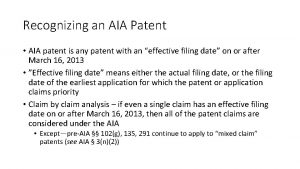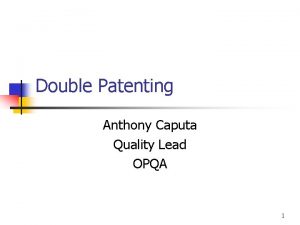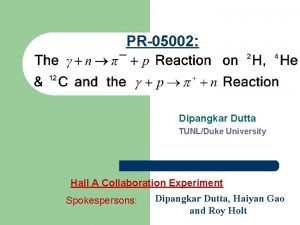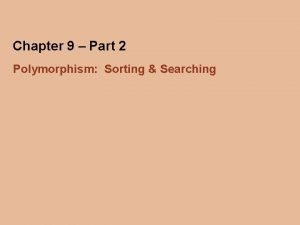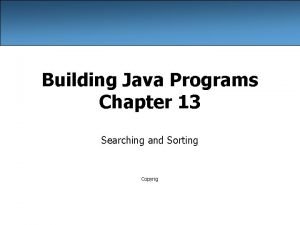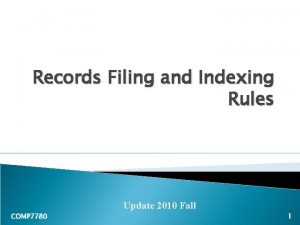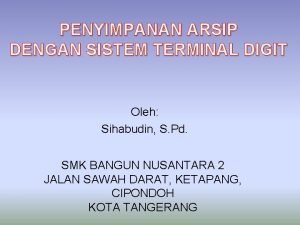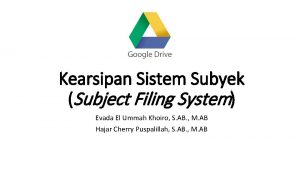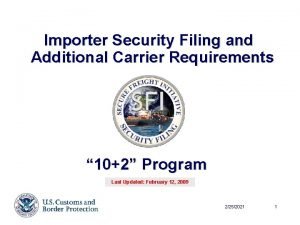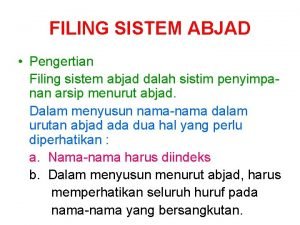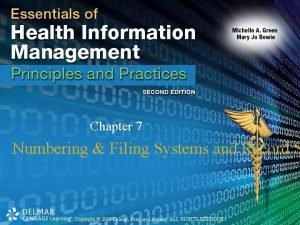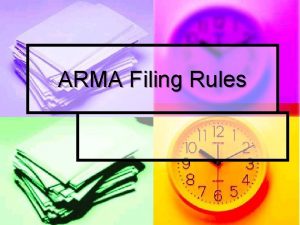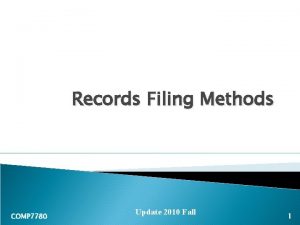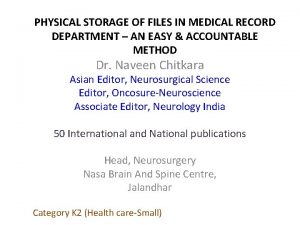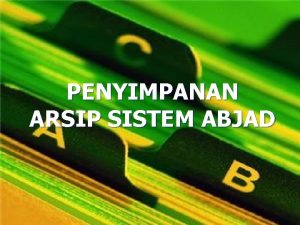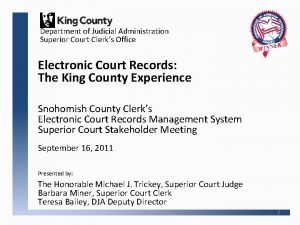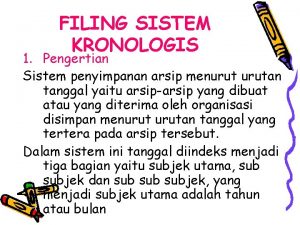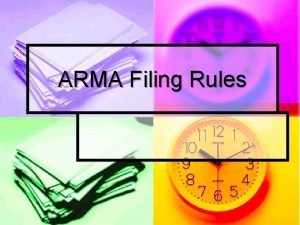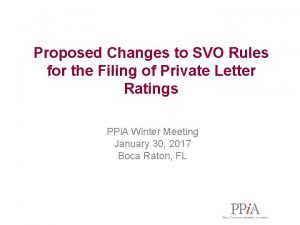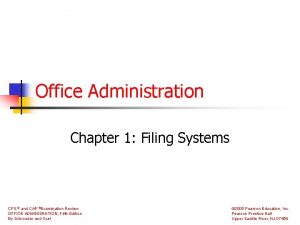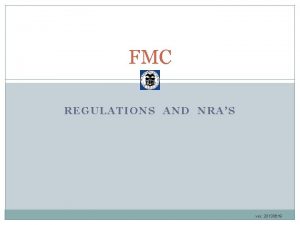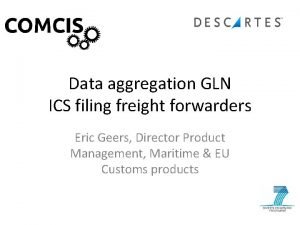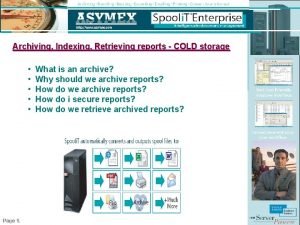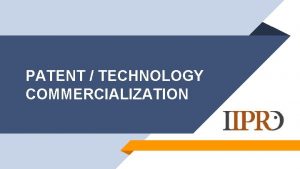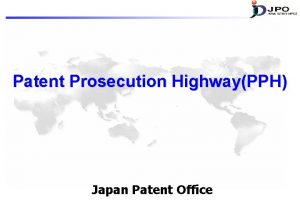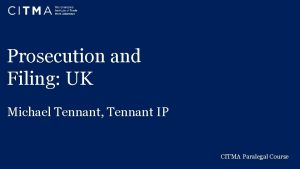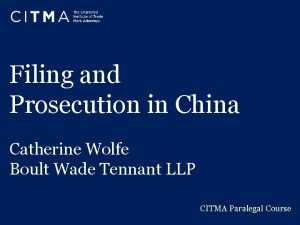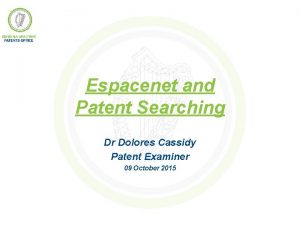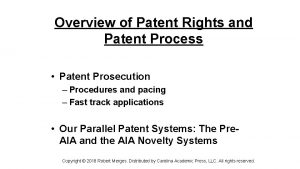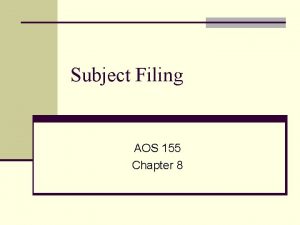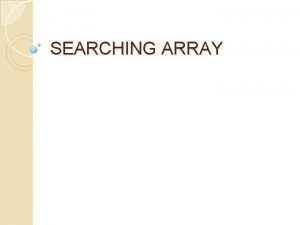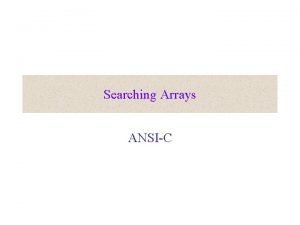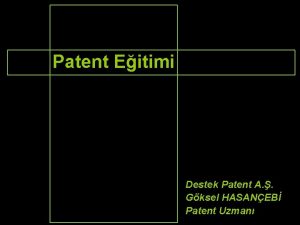Patent Searching Research and Analytics Patent Filing Prosecution



























![APPENDIX 1: Sources [1] https: //www. ucsusa. org/clean-energy/renewable-energy/how-hydrokinetic-energy-works [2] https: //www. energy. gov/eere/water/marine-and-hydrokinetic-energy-research-development [3] APPENDIX 1: Sources [1] https: //www. ucsusa. org/clean-energy/renewable-energy/how-hydrokinetic-energy-works [2] https: //www. energy. gov/eere/water/marine-and-hydrokinetic-energy-research-development [3]](https://slidetodoc.com/presentation_image_h/1bb6d213c8e99cb5c09a2ce756151f39/image-28.jpg)







- Slides: 35

Patent Searching | Research and Analytics | Patent Filing | Prosecution | Litigation and E-Discovery | IP Valuation | Patent Portfolio | Landscape Sample Landscape Study On Ocean Energy Image Source: DNV GL

Content Introduction Forms of Ocean Energy Technologies Notable Projects Economical Value Advantages & Disadvantages Objectives of the Landscape/Study Patent Literature Analysis v Graphical and Analytical Representation Appendix 1 – Sources Appendix 2 – Definition of IPC Sub Classes Patent Searching | Research and Analytics | Patent Prosecution/Preparation Support | Litigation and E-Discovery | IP Valuation | Patent Portfolio Watch

Introduction The power of the ocean: abundant clean energy The ocean energy or marine energy resource is vast. The theoretical resource potential of ocean energy is more than sufficient to meet present and projected global electricity demands well into the future. Estimates for this potential range from 20 000 terawatt-hours (TWh) to 80 000 terawatt-hours (TWh) of electricity a year, which is 100% to 400% of current global demand for electricity. Furthermore, successful deployment of ocean energy technologies offers substantive opportunities and benefits, including: Energy independence: tapping into an indigenous resource Decarbonisation: delivering CO 2 -free power Job creation: building a low-carbon industry, including providing employment opportunities for coastal and island communities Complement to other renewables: attractive in combination with other renewable energy options: e. g. , improved predictability, decreased variability, spatial concentration, and socio-economic benefits. Insight Marine energy or ocean energy (also referred to as marine power , ocean power, or marine and hydrokinetic energy) refers to the energy carried by ocean waves, tides, salinity, and ocean temperature differences. Patent Searching | Research and Analytics | Patent Prosecution/Preparation Support | Litigation and E-Discovery | IP Valuation | Patent Portfolio Watch Source: Appendix 1

Forms of Ocean Energy Insight Ocean can produce two types of energy: thermal energy from the sun's heat, and mechanical energy from the tides and waves. Above are the few main sources of renewable Ocean energy. Patent Searching | Research and Analytics | Patent Prosecution/Preparation Support | Litigation and E-Discovery | IP Valuation | Patent Portfolio Watch Source: Appendix 1

Forms of Ocean Energy WHAT IS TIDAL ENERGY? Tidal streams are created by the constantly changing gravitational pull of the moon and sun on the world’s oceans. Tides never stop, with water moving first one way, then the other, the world over. Tidal stream technologies capture the kinetic energy of the currents flowing in and out of the tidal areas. Since the relative positions of the sun and moon can be predicted with complete accuracy, so can the resultant tide. It is this predictability that makes tidal energy such a valuable resource. The highest (spring) tidal ranges are generated when the sun, moon and earth are in line. Water flows in greater volumes when attracted by this combined gravitational pull. The lowest (neap) tidal ranges are generated when the sun, moon and earth describe a right angle. The split gravitational pull causes water to flow in lesser volumes. Tidal stream resources are generally largest in areas where a good tidal range exists, and where the speed of the currents are amplified by the funnelling effect of the local coastline and seabed, for example, in narrow straits and inlets, around headlands, and in channels between islands Patent Searching | Research and Analytics | Patent Prosecution/Preparation Support | Litigation and E-Discovery | IP Valuation | Patent Portfolio Watch Source: Appendix 1

Forms of Ocean Energy WHAT IS WAVE ENERGY? Waves are formed by winds blowing over the surface of the sea. The size of the waves generated will depend upon the wind speed, its duration, and the distance of water over which it blows (the fetch), bathymetry of the seafloor (which can focus or disperse the energy of the waves) and currents. The resultant movement of water carries kinetic energy which can be harnessed by wave energy devices The best wave resources occur in areas where strong winds have travelled over long distances. For this reason, the best wave resources in Europe occur along the western coasts which lie at the end of a long fetch (the Atlantic Ocean). Nearer the coastline, wave energy decreases due to friction with the seabed, therefore waves in deeper, well exposed waters offshore will have the greatest energy. There are many designs being pursued by developers to harness the power of waves. Insight Tidal and Wave Energy are two important and major sources of renewable Ocean energy. Patent Searching | Research and Analytics | Patent Prosecution/Preparation Support | Litigation and E-Discovery | IP Valuation | Patent Portfolio Watch Source: Appendix 1

Forms of Ocean Energy WHAT IS OCEAN TEMPERATURE GRADIENT OR OTEC (OCEAN THERMAL ENERGY) ? Ocean thermal energy conversion (OTEC) makes use of the temperature difference between the warm surface of the ocean and the colder layers underneath. Due to solar heating, the amount of energy available in the temperature gradient between hot and cold seawater can be substantially larger than the energy required pumping the cold seawater up from the lower layers of the ocean. The warm water from the surface is used to boil a working fluid (or, in open cycle systems, the seawater itself under low pressure), which is then run through a turbine and condensed using cold seawater pumped up from the depths. WHAT IS SALINITY GRADIENT ? Salinity gradient energy or blue energy is an of the high potential energy sources that placed in renewable energy's list. The salinity gradient energy can be one of the important sources of the renewable energy to electricity generation for global electrical demand in future. When saline and fresh water mixes the Gibbs free energy is released. This energy could be used for generation of electrical power. Salinity gradient power makes use of the potential energy available when saltwater and fresh water mix. Patent Searching | Research and Analytics | Patent Prosecution/Preparation Support | Litigation and E-Discovery | IP Valuation | Patent Portfolio Watch Source: Appendix 1

Ocean Energy Technologies Wave Energy Converters Tidal Stream OTEC Deep Ocean Current Full-scale prototypes being tested. Many leading WEC designs have remained at this stage for some time A few test facilities (mostly pilot-scale) trailed, but no long -term operation Leading developers testing individual prototypes in locations representative of potential commercial sites, generating grid-connected electricity. Demonstration in arrays still lacking Very few active concepts being developed; laboratory-scale tank testing has occurred Tidal Range Most mature of the ocean energy technologies, with a proven track record stretching back to the 1960 s but limited deployment to date Salinity Gradient A handful of universitybased research projects have been conducted, as well as small-scale system operation Insight The focus of this study is to analyze technologies, such as ’Wave Energy Convertersion’, ’Tidal Stream’, etc. , as they have created a hype in the domain and are closest to see commercial launches. Patent Searching | Research and Analytics | Patent Prosecution/Preparation Support | Litigation and E-Discovery | IP Valuation | Patent Portfolio Watch Source: Appendix 1

Notable Tidal Power Projects Swansea Bay Tidal Lagoon, United Kingdom – 240 MW The 240 MW Swansea Bay Tidal Lagoon project, to be built at Swansea Bay in the UK, is one of world’s biggest tidal power project. The planning application for the £ 850 m ($1. 4 bn) project was approved in March 2013. The plant will be located at a site with average tidal range of 8. 5 m and will involve the construction of a 9. 5 km-long sea wall or breakwater facility to create a lagoon cordoning off 11. 5 km 2 of sea. The plant will use reversible bulb turbines to generate power as water passes in and out of the lagoon with the rise and fall of tides. The ground breaking for the tidal power project is scheduled for 2015 while full commissioning is expected in 2018. The tidal lagoon, with an estimated annual power generation capacity 400 GWh, will power over 120, 000 homes for 120 years Insight The Swansea Bay tidal lagoon project in the UK and the Mey. Gen tidal array project in Scotland stand out among the few large-scale tidal power projects currently under development. Patent Searching | Research and Analytics | Patent Prosecution/Preparation Support | Litigation and E-Discovery | IP Valuation | Patent Portfolio Watch Source: Appendix 1

Notable Tidal Power Projects Mey. Gen Tidal Energy Project, Scotland – 86 MW Mey. Gen Tidal Energy Project located in the Inner Sound of the Pentland Firth off the north coast of Caithness, Scotland, is currently the world’s biggest underwater tidal turbine power project under development. The tidal array project received offshore planning consent for its 86 MW first phase development from the Scottish Government towards the end of 2013. The second phase development of the project is expected to raise the total installed capacity to 398 MW by 2020. The My. Gen project was initiated in 2006 by the Scottish company Mey. Gen, a joint venture between the tidal technology company Atlantis Resources and Morgan Stanley. Atlantis Resources acquired full ownership of the tidal array project in December 2013. Construction is expected to start for a demonstration array involving up to six AR 1000 single-rotor tidal turbines in 2014 with final commissioning expected in 2015. The first 1 MW prototype of the 22. 5 m tall AR 1000 tidal turbine with 18 m rotor diameter was deployed at the European Marine Energy Centre in 2011. Insight The Swansea Bay tidal lagoon project in the UK and the Mey. Gen tidal array project in Scotland stand out among the few large-scale tidal power projects currently under development. Patent Searching | Research and Analytics | Patent Prosecution/Preparation Support | Litigation and E-Discovery | IP Valuation | Patent Portfolio Watch Source: Appendix 1

Notable Wave Energy Project Pelamis, World’s First Commercial Wave Energy Project, Agucadoura Pelamis Wave Power’s Agucadoura Wave Farm is the world’s first commercial wave energy project located five kilometre off the Agucadoura coast in Portugal. The farm started delivering 2. 25 MW produced by three Pelamis generators in September 2008. Pelamis Wave Power, earlier known as Ocean Power Delivery (OPD) supplied the first three Pelamis P-750 “advanced wave energy conversion technology” machines. Another 28 machines were planned as a part of phase 2 to generate 22. 5 MW for state -run power company Energias de Portugal. The first three generators, however, had to be towed back to the port after four months of commissioning because of technical problems. The global financial crunch of 2008 made financing of the re-installation of the generators even more difficult. The wave farm has since then been shut down. The order for the initial phase was worth € 8. 2 m, funded by a Portuguese consortium led by Enersis. The project was expected to bring power ashore at Agucadoura, and provide electricity to 1, 500 homes using the national state run electricity grid system. Insight On completion of both the phases, the project was expected to meet the average electricity demand of more than 15, 000 Portuguese households. Patent Searching | Research and Analytics | Patent Prosecution/Preparation Support | Litigation and E-Discovery | IP Valuation | Patent Portfolio Watch Source: Appendix 1

Economic Value Investment in USD billion 0. 9 0. 8 0. 7 0. 6 0. 5 0. 4 0. 3 0. 2 2010 2011 0. 3 0. 2 2015 2016 2017 0. 1 0 0. 3 Estimated global market potential for wave and tidal energy by 2050 0 2004 2005 2006 2007 2008 2009 2012 2013 2014 Insight Economic opportunities A recent market research report forecasts that the value of the global tidal and wave energy market will reach $11. 3 billion in 2024 Patent Searching | Research and Analytics | Patent Prosecution/Preparation Support | Litigation and E-Discovery | IP Valuation | Patent Portfolio Watch Source: Appendix 1

Ocean Energy: Merits Environment friendly Abundant and widely available No damage to land Renewable Less dependency on fossil fuels Variety of ways to harness Easily predictable Patent Searching | Research and Analytics | Patent Prosecution/Preparation Support | Litigation and E-Discovery | IP Valuation | Patent Portfolio Watch

Ocean Energy: Demerits The lack of detailed resource mapping Ineffective Device Designs Cost Constraints Uncertain Long-Term Forecast Higher Investment for Environmental Monitoring Patent Searching | Research and Analytics | Patent Prosecution/Preparation Support | Litigation and E-Discovery | IP Valuation | Patent Portfolio Watch

Objectives Summary The landscape study: Focuses on patents and patents applications pertaining to the technology “Ocean Energy”. Limits to the patents and patents applications granted/published up until the first week of May, 2019. Focuses on two major ocean energy technologies viz. ‘Tidal Stream Turbines’ and ‘Wave Energy Converters’. Helps understanding the major patent holders, geographical distribution of patents, technologies classification, etc. Analyses patent application filing/publication/grant trends over the years, top assignees, and patent classifications among others. Patent Searching | Research and Analytics | Patent Prosecution/Preparation Support | Litigation and E-Discovery | IP Valuation | Patent Portfolio Watch

Executive Summary After analysis, 213 relevant patent families were picked as relevant from a pack of 1311 patent families. Notably, Individual Inventors dominate research in the technology, wherein 95 patents/applications are assigned to said individual inventors. Corporate Entities, on the other hand, has 36 patents/applications. Among corporate entities, ‘AW Energy’ has (7 nos. ) patents or pending patent applications and emerges out as the leading patent assignee followed by Alstom Hydro (5 nos. ). GE and Sabella too hold significant patent portfolio (3 nos. ) patents/applications each. Universities too have significant number of patent filings, (21 nos. ) patents/applications Last four years, there is a surge in patent publication, wherein 2016 has reported/witnessed maximum publications (31 nos. ). Inventors from China, particularly, Chen Zi and Chen Yongyuan are the leading innovators. Not to forget Järvinen Arvo and Lazaris Spyros as they has also contributed significantly Patent Searching | Research and Analytics | Patent Prosecution/Preparation Support | Litigation and E-Discovery | IP Valuation | Patent Portfolio Watch

Patent. Literature Analysis: Assumptions: Patent Assumptions: Report provides patent literature analysis for the emerging technology Viz. “Hydrokinetic Energy”. The patent search started with the identification of relevant search terms or keywords and patent classification codes. The study was primarily carried out using Questel-Orbit, a popular database for patent literature that has patent coverage for more than 95 jurisdictions around the world. All analysis has been performed on unique patent families (one publication per family). The formulated search queries were focussed to retrieve patent literature pertaining to the “Tidal/Ocean/Wave Energy/Tidal Stream Turbines/Wave Energy Converters.

Graphical and Analytical Representation Filing Based Trends 1. Priority, Filing, Publication Year Based Trend Analysis 35 Number of Applications 30 25 20 15 10 5 0 <2007 2008 2009 2010 2011 2012 2013 2014 2015 2016 2017 2018 2019 Priority 30 13 14 13 22 22 20 21 14 13 27 4 0 Application 24 7 14 15 20 18 24 26 18 11 26 10 0 Publication 16 6 7 7 11 18 23 16 24 31 21 27 6 Insight # Note: There may be higher number of application for the years 2015 -2018, attributed to nonpublished patent applications. The above graph demonstrates priority, filing, and publication trends over the years. Patent Searching | Research and Analytics | Patent Prosecution/Preparation Support | Litigation and E-Discovery | IP Valuation | Patent Portfolio Watch

2. Geographical Distribution of Patent Application Filings Insight Geographical distribution demonstrates that maximum number of filing were originated in France followed by China and United States. # Note: There may be higher number of application for the years 2015 -2018, attributed to non-published patent applications. Patent Searching | Research and Analytics | Patent Prosecution/Preparation Support | Litigation and E-Discovery | IP Valuation | Patent Portfolio Watch

3. Trend Analysis: Entity Types Ind. Inventor 45% Other Entity 29% Corporate Entity 17% University 10% Patent Searching | Research and Analytics | Patent Prosecution/Preparation Support | Litigation and E-Discovery | IP Valuation | Patent Portfolio Watch

3. 1 Trend Analysis: Corporate Entities 8 7 6 5 4 3 2 1 0 7 5 lo el nc Te ch ni p Fr a 2 W e t ul na Re ec h g T tin rv es gin ee 2 ea er ow rs P ive n Ha ou rc e ss R e lys 2 Fo ur Eo 2 g N am ics yn l D ia 2 E n r Ba nt re ffe Di 2 Oc 2 s & E 2 ye lla be Sa ne rg y GE E Al st o m H yd rg ro y 3 E ne Aw 5 Insight The above chart demonstrate trends for corporate entities, wherein AW Energy emerges as the leading patent applicant in Ocean energy technology followed by Alstom Hydro and GE Energy. Patent Searching | Research and Analytics | Patent Prosecution/Preparation Support | Litigation and E-Discovery | IP Valuation | Patent Portfolio Watch

4. Trend Analysis: Inventors 13 14 11 12 10 7 8 6 6 3 4 3 3 3 2 L C SA HR AR IS T I R OP AU HE R NO GO RI DG EW EL VU KO I DU CH E NE AN FR AN JE AU VI H U CO I S E PP ILI PH NC OI N DA EA RT BE CA GN I RA -F JE AN RI S S PY RO S S VO ZA LA JÄ RV IN E N AR YU NG CH EN YO CH E N AN ZI 0 Insight The above chart demonstrates trends for inventors, wherein ‘Chen Zi’ emerges out as the leading inventors in Ocean energy technology followed by Chen Yongyuan and Järvinen Arvo. Patent Searching | Research and Analytics | Patent Prosecution/Preparation Support | Litigation and E-Discovery | IP Valuation | Patent Portfolio Watch

5. Trend Analysis: Technical 5. 1 Focus of Inventions (Tidal Stream Turbines) Insight Large chunk of analysed patents/patent applications discusses innovations related to Turbine placement (39%) and Turbine configuration (37%) followed by Support structure (17%). Patent Searching | Research and Analytics | Patent Prosecution/Preparation Support | Litigation and E-Discovery | IP Valuation | Patent Portfolio Watch

4. Technical Trend Analysis 5. 2 Focus of Inventions (WECs) Insight Large chunk of analysed patents/patent applications discusses innovations related to WEC operating principle (35%) and WEC orientation (23%) followed by Power take-off (PTO) (16%). Patent Searching | Research and Analytics | Patent Prosecution/Preparation Support | Litigation and E-Discovery | IP Valuation | Patent Portfolio Watch

6. IPCs Based Trend Analysis IPC F 03 B 18% F 03 B MACHINES OR ENGINES FOR LIQUIDS F 03 D WIND MOTORS F 16 C SHAFTS; FLEXIBLE SHAFTS; MECHANICAL MEANS FOR TRANSMITTING MOVEMENT IN A FLEXIBLE SHEATHING; ELEMENTS OF CRANKSHAFT MECHANISMS; PIVOTAL CONNECTIONS; ROTARY ENGINEERING ELEMENTS OTHER THAN GEARING, COUPLING, CLUTCH OR BRAKE ELEMENTS; BEARINGS E 02 B HYDRAULIC ENGINEERING B 63 B SHIPS OR OTHER WATERBORNE EQUIPMENT FOR SHIPPING F 03 D 10% Other 55% F 16 C 6% E 02 B 6% B 63 B 6% DEFINITION VESSELS; Insight Large chunk of analysed patents/patent applications are assigned with patent class “F 03 B” and “F 03 D” followed by IPC ”F 16 C”, “E 02 B” and ”B 63 B” Patent Searching | Research and Analytics | Patent Prosecution/Preparation Support | Litigation and E-Discovery | IP Valuation | Patent Portfolio Watch Source: WIPO

6. 1 IPC Sub Class Distribution F 03 D, sub sections E 02 B, sub sections F 03 D-009/00 23% E 02 B-009/00 9% Other 40% F 03 B, sub sections F 03 D-003/00 10% F 03 D-003/04 8% F 03 D-009/25 10% F 03 B-013/18 11% F 03 B-013/26 11% F 03 D-003/06 10% Other 50% F 16 c, sub sections F 16 C-017/14 20% Other 13% E 02 B-003/06 9% E 02 B-009/08 69% F 03 B-017/06 10% F 03 B-013/10 9% F 03 B-013/00 9% B 63 B, sub sections B 63 B-035/44 28% B 63 B-009/00 44% Other 67% F 16 C-033/10 13% B 63 B-021/00 11% Patent Searching | Research and Analytics | Patent Prosecution/Preparation Support | Litigation and E-Discovery | IP Valuation | Patent Portfolio Watch B 63 B-035/00 17%

7. Conclusion Ocean energy has the potential to play significant role in the realm of renewable energy sources. The ocean energy resources are vast – with an estimated theoretical potential that can meet more than current and projected electricity demand. Accordingly, it has been verified that researchers, such as corporates, individual inventor, universities, etc. are investing their time and money for the research and development in this field. Notably, Individual Inventors are dominating the research in this domain, wherein 95 patents/applications are assigned to said individual inventors. Corporate Entities, on the other hand, are lagging the individual patent application filers. Among corporate entities, ‘AW Energy’ has maximum patents or pending patent applications. Patent filing activity has seen a surge in recent years and surely go up in the years to come. Patent Searching | Research and Analytics | Patent Prosecution/Preparation Support | Litigation and E-Discovery | IP Valuation | Patent Portfolio Watch
![APPENDIX 1 Sources 1 https www ucsusa orgcleanenergyrenewableenergyhowhydrokineticenergyworks 2 https www energy goveerewatermarineandhydrokineticenergyresearchdevelopment 3 APPENDIX 1: Sources [1] https: //www. ucsusa. org/clean-energy/renewable-energy/how-hydrokinetic-energy-works [2] https: //www. energy. gov/eere/water/marine-and-hydrokinetic-energy-research-development [3]](https://slidetodoc.com/presentation_image_h/1bb6d213c8e99cb5c09a2ce756151f39/image-28.jpg)
APPENDIX 1: Sources [1] https: //www. ucsusa. org/clean-energy/renewable-energy/how-hydrokinetic-energy-works [2] https: //www. energy. gov/eere/water/marine-and-hydrokinetic-energy-research-development [3] http: //www. hydroquebec. com/sustainable-development/documentation-center/hydrokinetic-power. html [4] http: //www. alternative-energy-tutorials. com/energy-articles/hydrokinetic-energy. html [5] https: //www. sciencedirect. com/science/article/pii/S 1364032115015725 [6] https: //www. sciencedirect. com/science/article/pii/S 1364032114008624 [7] http: //energy-alaska. wikidot. com/hydrokinetic [8] http: //me 1065. wikidot. com/hydro-kinetic-power [9] http: //www. coastalwiki. org/wiki/Wave_energy_converters [10] https: //www. youtube. com/watch? v=Vk. TRc. Ty. DSyk [11] https: //www. irena. org/ocean [12] https: //www. dutchmarineenergy. com/about-us/downloads/15%20 -%20 IRENA_Ocean_Energy_report_2014. pdf [13] https: //link. springer. com/chapter/10. 1007/978 -3 -319 -39889 -1_8 [14] http: //www. emec. org. uk/marine-energy/ [15] https: //irena. org/publications/2018/May/Renewable-Energy-and-Jobs-Annual-Review-2018 [16] http: //www. aquaret. com/index. html [17] https: //www. power-technology. com/features/featuretidal-giants-the-worlds-five-biggest-tidal-power-plants 4211218/ [18] https: //www. power-technology. com/projects/pelamis/ [19] https: //www. presentationgo. com/ [20] https: //www. conserve-energy-future. com/advantages_disadvantages_waveenergy. php Patent Searching | Research and Analytics | Patent Prosecution/Preparation Support | Litigation and E-Discovery | IP Valuation | Patent Portfolio Watch

APPENDIX 2: IPC Sub-class Definitions IPC SUB-CLASS F 03 B DEFINITIONS MACHINES OR ENGINES FOR LIQUIDS F 03 B-003/12 Blades; Blade-carrying rotors F 03 B-011/00 Parts or details not provided for in, or of interest apart from, the preceding groups F 03 B-013/00 Adaptations of machines or engines for special use; Combinations of machines or engines with driving or driven apparatus F 03 B-013/10 Submerged units incorporating electric generators or motors F 03 B-013/12 characterised by using wave or tide energy F 03 B-013/14 using wave energy F 03 B-013/18 where the other member, i. e. rem is fixed, at least at one point, with respect to the sea bed or shore Patent Searching | Research and Analytics | Patent Prosecution/Preparation Support | Litigation and E-Discovery | IP Valuation | Patent Portfolio Watch Source: WIPO

APPENDIX 2: IPC Sub-class Definitions IPC SUB-CLASS DEFINITIONS F 03 B-013/22 using the flow of water resulting from wave movements to drive a motor or turbine F 03 B-013/26 using tide energy F 03 B-017/06 using liquid flow with predominantly kinetic energy conversion, e. g. of swinging-flap type , "run-of-river", "ultra-low head" F 03 D WIND MOTORS F 03 D-003/00 Wind motors with rotation axis substantially perpendicular to the air flow entering the rotor F 03 D-003/04 having stationary wind-guiding means, e. g. with shrouds or channels F 03 D-003/06 Rotors Patent Searching | Research and Analytics | Patent Prosecution/Preparation Support | Litigation and E-Discovery | IP Valuation | Patent Portfolio Watch Source: WIPO

APPENDIX 2: IPC Sub-class Definitions IPC SUB-CLASS DEFINITIONS F 03 D-009/00 Adaptations of wind motors for special use; Combinations of wind motors with apparatus driven thereby; Wind motors specially adapted for installation in particular locations (hybrid wind-photovoltaic energy systems for the generation of electric power F 03 D-009/25 the apparatus being an electrical generator SHAFTS; FLEXIBLE SHAFTS; ELEMENTS OR CRANKSHAFT MECHANISMS; ROTARY BODIES OTHER THAN GEARING ELEMENTS; BEARINGS F 16 C-017/14 specially adapted for operating in water F 16 C-033/10 Construction relative to lubrication B 63 B SHIPS OR OTHER WATERBORNE VESSELS; EQUIPMENT FOR SHIPPING B 63 B-035/00 Vessels or like floating structures adapted for special purposes Patent Searching | Research and Analytics | Patent Prosecution/Preparation Support | Litigation and E-Discovery | IP Valuation | Patent Portfolio Watch Source: WIPO

APPENDIX 2: IPC Sub-class Definitions IPC SUB-CLASS B 63 B-035/44 B 63 B-009/00 DEFINITIONS Floating buildings, stores, drilling platforms, or workshops, e. g. carrying water-oil separating devices Methods of designing, building, maintaining, converting, refitting, repairing, or determining properties of vessels, not otherwise provided for B 63 B-021/00 Tying-up; Shifting, towing, or pushing equipment; Anchoring E 02 B-003/06 Moles; Piers; Quay walls; Groynes; Breakwaters Wave dissipating walls; Quay equipment E 02 B-009/00 Water-power plants; Layout, construction or equipment, methods of, or apparatus for, making same E 02 B-009/08 Tide or wave power plants Patent Searching | Research and Analytics | Patent Prosecution/Preparation Support | Litigation and E-Discovery | IP Valuation | Patent Portfolio Watch Source: WIPO

Disclaimer IIPRD has prepared this sample report as an exemplary report, wherein the content of the report is based on internal evaluation of Patents and Non-Patent Literature that is conducted based on Databases and Information sources that are believed to be reliable by IIPRD. A complete list of patent documents retrieved is not disclosed herein as the report is exemplary but can be shared if desired based on terms and conditions of IIPRD disclaims all warranties as to the accuracy, completeness or adequacy of such information. The above sample report is prepared based on the search conducted on the keywords and other information extracted from the understanding of the Patent Analysts of IIPRD, and subjectivity of the researcher and analyst. Neither IIPRD nor its affiliates nor any of its proprietors, employees (together, "personnel") are intending to provide legal advice in this matter. Patent Searching | Research and Analytics | Patent Prosecution/Preparation Support | Litigation and E-Discovery | IP Valuation | Patent Portfolio Watch

About IIPRD is a premier Intellectual Property Consulting and Commercialization/Licensing Firm with a diversified business practice providing services in the domain of Commercialization, Valuation, Licensing, Transfer of Technology and Due- Diligence of Intellectual Property Assets along with providing complete IP and Patent Analytics and Litigation Support Services to International Corporate and Global IP Law Firms. Patent Searching | Research and Analytics | Patent Prosecution/Preparation Support | Litigation and E-Discovery | IP Valuation | Patent Portfolio Watch

Contact Details Noida (NCR) Office – Head Office E-13, UPSIDC Site-IV, Behind Grand Venice, Greater Noida, 201308 Contact Person: Tarun Khurana Contact No(s): +91 -(120) 4296878, 4909201, 4516201 E-Mail: iiprd@iiprd. com, info@khuranaandkhurana. com Website: www. iiprd. com | www. khuranaandkhurana. com Delhi | Noida | Mumbai | Pune | Bengaluru | Hyderabad | Indore | Jalandhar US | Bangladesh | Myanmar | Vietnam | Nepal | Malaysia | Sri Lanka Patent Searching | Research and Analytics | Patent Prosecution/Preparation Support | Litigation and E-Discovery | IP Valuation | Patent Portfolio Watch
 Epo patent prosecution highway
Epo patent prosecution highway Aia
Aia Opqa
Opqa Patent effective filing date
Patent effective filing date Pre prosecution
Pre prosecution Teramond
Teramond Knuth morris pratt pattern matching algorithm
Knuth morris pratt pattern matching algorithm Searching and sorting arrays in c++
Searching and sorting arrays in c++ Big oh java
Big oh java Searching and sorting in java
Searching and sorting in java Big o java
Big o java Searching and sorting in java
Searching and sorting in java Importer security filing form template
Importer security filing form template Alphabetic indexing rules examples
Alphabetic indexing rules examples Bacteria kingdom monera
Bacteria kingdom monera Dua angka dari belakang sebagai unit 1 menunjukkan
Dua angka dari belakang sebagai unit 1 menunjukkan Paper based filing system
Paper based filing system Kelebihan sistem subjek
Kelebihan sistem subjek Ams filing requirements
Ams filing requirements Jelaskan pengertian filing sistem abjad
Jelaskan pengertian filing sistem abjad What is terminal digit filing
What is terminal digit filing Arma filing rules
Arma filing rules Sofista filing
Sofista filing General alphabetic section of the numeric file
General alphabetic section of the numeric file Terminal digit filing
Terminal digit filing Contoh mengindeks nama orang asing
Contoh mengindeks nama orang asing King county e filing
King county e filing Bca jika diindeks kodenya adalah
Bca jika diindeks kodenya adalah Procrastinate records
Procrastinate records Pengertian sistem penyimpanan arsip
Pengertian sistem penyimpanan arsip Arma indexing rules
Arma indexing rules Svo filing requirements
Svo filing requirements Office automated filing systems
Office automated filing systems Fmc regulations
Fmc regulations Ics global logistics
Ics global logistics Filing system
Filing system

